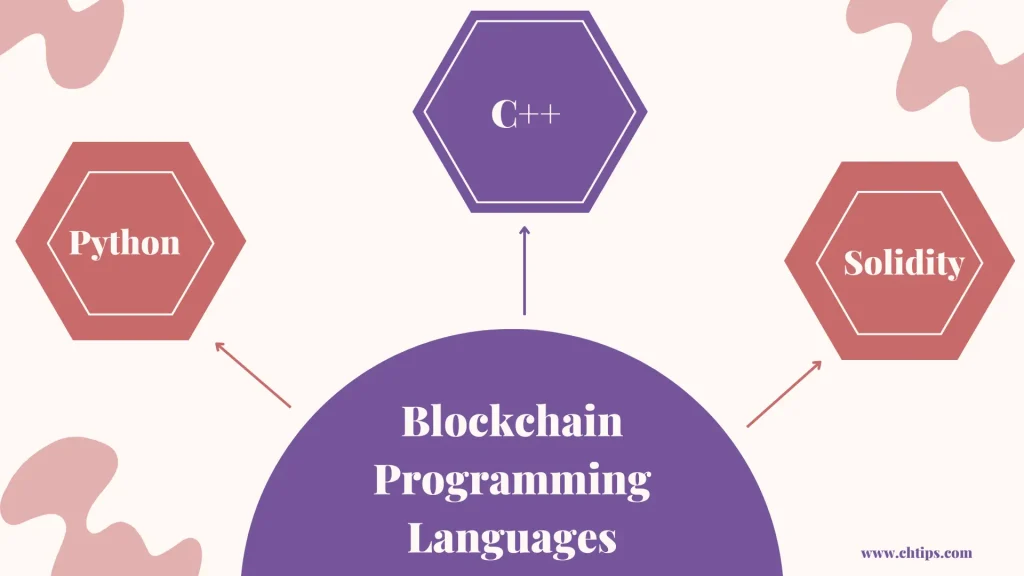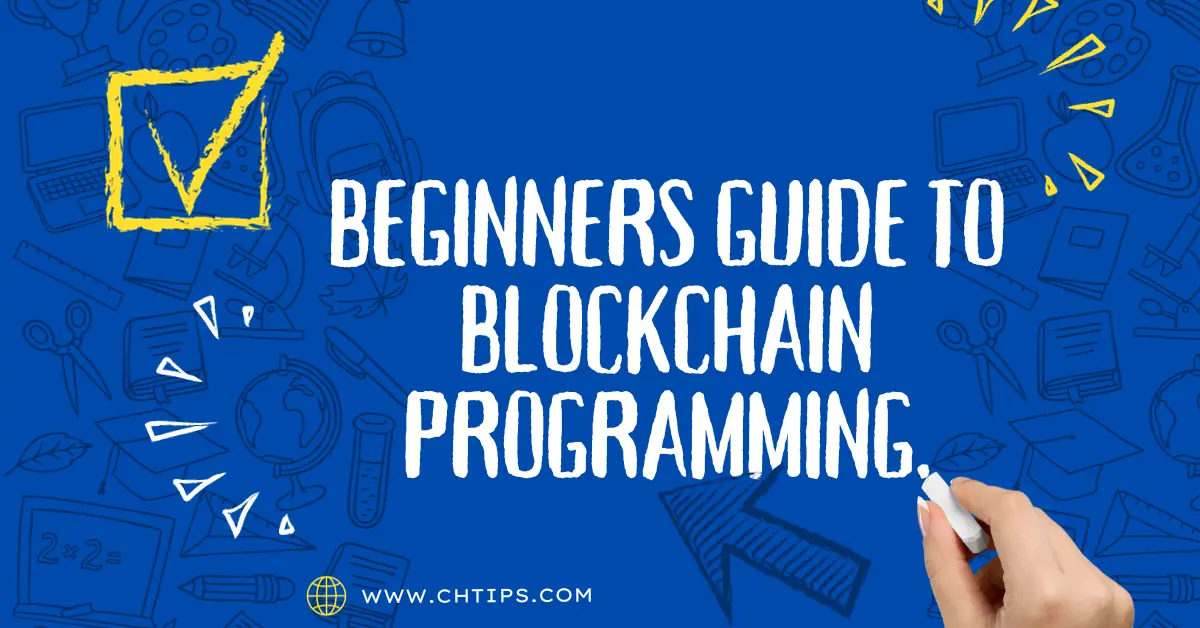What is Blockchain?
Blockchain is a distributed digital ledger shared among many nodes or computers. Although the fundamental technology of Bitcoin first attracted attention, its uses go far beyond cryptocurrencies.
Thanks to blockchain technology, everything from supply chain management to safe data storage is being revolutionized right now.
Importance of Blockchain Programming
Given the rising demand for blockchain-based solutions, blockchain programming experts are desperately needed.
It’s a skill that opens up many career prospects and provides a comprehensive understanding of this game-changing technology.
Currently, blockchain developers are among the highest-paid workers in the tech sector.
Thus, learning blockchain programming is like making a high-yield investment in a secure asset.
Blockchain Basics
Anatomy of a Block
A blockchain is a collection of blocks connected in a straight line according to time.
Each block has a reference (hash) to the block before it, a set of transactions, and a timestamp.
This design offers a high level of security by making data tampering extremely difficult.
Decentralization vs. Centralization
Decentralization is a crucial distinction between blockchain and conventional databases.
A single server houses all the data in a centralized system, making it an excellent target for assaults.
On the other hand, a blockchain is decentralized, meaning the data is dispersed among numerous nodes.
Enhanced security, translucence and responsibility are all crucial features of this design.
Blockchain Programming Languages

#1. Solidity.
On Ethereum, Solidity is the preferred language for creating smart contracts.
Decentralized apps (dApps) are created using this statically typed language and run on the Ethereum Virtual Machine (EVM).
You must become familiar with Solidity to use Ethereum as your preferred blockchain.
#2. C++.
This general-purpose language is appropriate for blockchain development, where speed and efficiency are crucial because it provides speed and low-level access to computer memory.
Since it was created for initiatives like Bitcoin, C++ is frequently employed in those endeavors.
#3. Python.
Python is famed for being straightforward and readable, making it stylish and one of the popular languages for those new to blockchain.
Python is employed in more compact blockchain projects than Solidity or C++, and it’s great for learning the fundamentals.
Useful Video : Blockchain Technology
Setting Up Development Environment
Local Environment
To get started, you’ll need an IDE (Integrated Development Environment) appropriate for blockchain development.
Because of the support from the community and the abundance of extensions, Visual Studio Code is well-liked.
Node.js and npm (Node Package Manager), which are required for managing dependencies, must also be installed.
Online Platforms
Remix IDE and similar technologies are ideal if you prefer a web-based environment.
Remix enables you to create, test, and deploy intelligent contracts from your web browser without the need for installations.
Smart Contracts
Definition
Smart contracts are contracts that automatically carry out the terms and conditions that are encoded directly into lines of code.
They are immutable and transparent since they are duplicated and stored on the blockchain.
Real-world Applications
Beyond financial deals, smart contracts have a wide range of uses.
They are used in healthcare for secure patient data, in real estate for open land registries, and even in supply chain management to automate intricate multi-party contracts.
Creating Your First Smart Contract
Requirements
Make sure you have Node.js and npm installed before you begin writing code. These will enable you to handle packages and dependencies properly.
Step-by-step Guide
- Open your IDE and create a new file with a .sol extension.
- Write the Solidity code for your smart contract.
- Start simple: Make a contract that allows users to send and receive tokens.
- Compile your smart contract code to ensure there are no errors.
- Test the contract using the tools available or manually to ensure it behaves as expected.
Testing Smart Contracts
Tools for Testing
To ensure your smart contracts are safe and function as expected, frameworks like Truffle include Mocha and Chai for automated testing.
Manual Testing
Never rely on automated tests alone. You can replicate real-world settings and find potential flaws that automated tests might miss using manual testing.
Deploying Smart Contracts
Deploying to Test Networks
Deploying your smart contract on a testnet like Ropsten or Kovan is essential before making it live.
This enables you to test it without using physical assets in a live network to see how it performs.
Deploying to Main Networks
You can deploy your smart contract to a central network like Ethereum if it’s secure and error-free.
Keep in mind that there are means involved, so make sure you’ve done thorough testing.
The Need for Crypto in Blockchain App Deployment
Why Crypto is Essential
The deployment is inaccessible when you create smart contracts or decentralized apps (dApps) using frameworks like Ethereum.
Every transaction necessitates a fee called “gas,” which must be paid in Bitcoin, including implementing smart contracts.
The cryptocurrency that fuels your blockchain-based initiatives is known as cryptocurrency.
Types of Crypto for Different Blockchains
Your choice of blockchain platform will determine the kind of cryptocurrency you require.
As an illustration, you’ll need ETH for Ethereum, BNB for Binance Smart Chain, and ADA for Cardano.
These digital currencies enable multiple features, such as innovative contract interactions, acting as investment and utility tokens.
How to Buy Crypto
Thanks to various cryptocurrency exchanges and simple payment options, buying cryptocurrencies has become more and more feasible.
You can use conventional techniques like bank transfers or credit or debit cards to complete transactions quickly.
Purchase Crypto with Apple Pay
If you’re an Apple user, buying crypto is even easier. Many reputable exchanges offer the option to purchase crypto with Apple Pay, providing an extra layer of security and convenience.
It’s a straightforward process that only requires you to connect your Apple Pay account to the exchange, choose the amount you wish to buy, and confirm the transaction.
Storing Your Crypto Safely
After purchasing cryptocurrency, it’s critical to store it safely. If you’re handling sizable quantities, use a trustworthy cryptocurrency wallet, preferably a hardware wallet.
These wallets create and maintain your keys in an offline environment, protecting them from internet hacking efforts.
Deploying Your Blockchain App
You can launch your blockchain application once you have enough cryptocurrency. Depending on your platform, you might have to use that platform’s native cryptocurrency to pay the necessary gas fees.
For instance, while launching a dApp on Ethereum, gas is paid in ether. Although this is an unavoidable expense, it is a tiny price to pay for blockchain’s decentralization and security advantages.
Understanding how cryptocurrencies fit into the blockchain ecosystem helps you become a more skilled blockchain programmer and deploy your applications with more excellent knowledge.
Front-End and Blockchain
Web3.js
A JavaScript library called Web3.js enables communication between your application and a blockchain. Web3.js is crucial for front-end development while creating a dApp.
MetaMask
Users can interact with dApps directly from their browser by using the popular browser extension MetaMask, which also functions as an Ethereum wallet.
Blockchain Frameworks
Truffle
Using the Ethereum Virtual Machine (EVM), Truffle is a complete development environment, testing framework, and asset pipeline for blockchains.
Everything required to create blockchain applications and smart contracts is provided.
Embark
Embark is a quick, straightforward, and dependable platform for creating Ethereum-grounded, real-world operations.
Smart contracts, packaging decentralized applications, and more are all available.
Security in Blockchain Programming
Common Pitfalls
The development of blockchains must prioritize security. Look for flaws like integer overflows, underflows, and reentrancy attacks.
Best Practices
Use only up-to-date, checked-out libraries. Observe the coding standards and recommendations from the blockchain platform you’re using.
Popular Blockchain Platforms
Ethereum
In addition to a robust ecosystem, Ethereum, the most well-liked blockchain for dApps, offers community support.
Binance Smart Chain
BSC is growing more and more well-liked as a result of its inexpensive transactions and quick turnaround times.
Cardano
Cardano distinguishes itself through its research-driven methodology, concentrating on developing a more safe and scalable blockchain.
Career Opportunities
Jobs in Blockchain Programming
Roles in the industry include architect, engineer for intelligent contracts, and blockchain developer.
Startups and tech behemoths alike are looking for qualified blockchain programmers.
Salaries and Demand
Salaries are competitive by nature, given the rising demand for blockchain solutions. Blockchain developers with experience might expect six-figure incomes.
Recommended Reading
- Characteristics of Object Oriented Programming Languages
- Advantages and Disadvantages of Low Level Language
- Advantages and Disadvantages of Assembly Language
- Why is C++ So Hard to Learn For Beginners
- What are the Importance of C Programming Language
- 10 Advantages and Disadvantages of Machine Language
- What Language is YouTube Written in
- Advantages and Disadvantages of Subroutines
- Is Python Written in C
- What is PLC [Programmable Logic Controller]
- Structure of HTML Document With Examples
- C Programming Tutorials
- Computer Basic Tutorials
Learning Resources
Books
Books like “learning Blockchain” give a thorough preface to the proposition and operations of blockchain technology.
Online Courses
Courses tutored by subject-matter experts are available on platforms like Udemy and Coursera, delivering academic information and practical chops.
Conclusion
Blockchain programming is a cutting-edge technology that is influencing our future, not just another tech talent.
Understanding this technology is pivotal as we transition to a more secure and decentralized digital terrain.
Why then start learning blockchain programming today?
I have also written and compiled some articles on computers and telecommunications, and please go through them.
I hope you will like reading it.
All the questions and queries related to Blockchain Programming have been answered here.
If you have questions about Blockchain technology and cryptocurrency.
Don’t hesitate to contact me, and if you need to add, remove, or update anything from the article, please let me know in the comment section or via email.
I will be more than happy to update the article. I am always ready to correct myself.
I would like you to share this article with your friends and colleagues; this motivates me to write more on related topics.
!!! Thank You !!!
